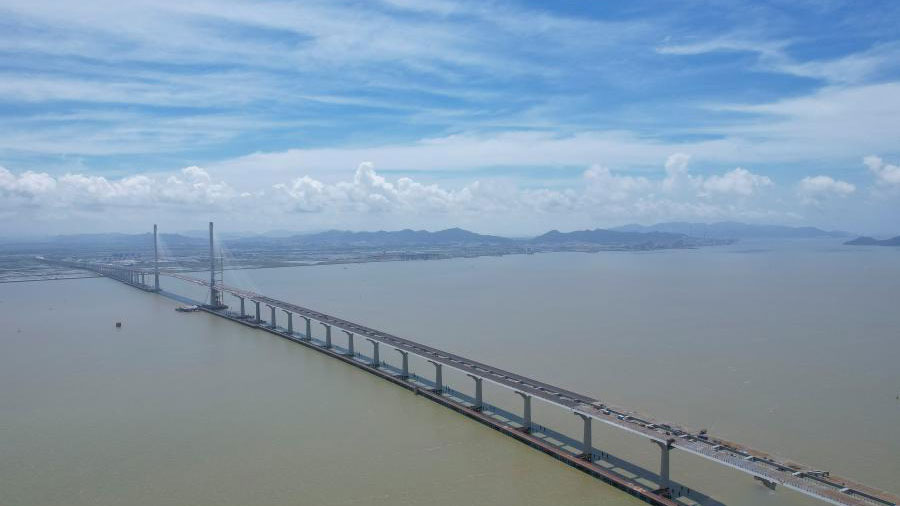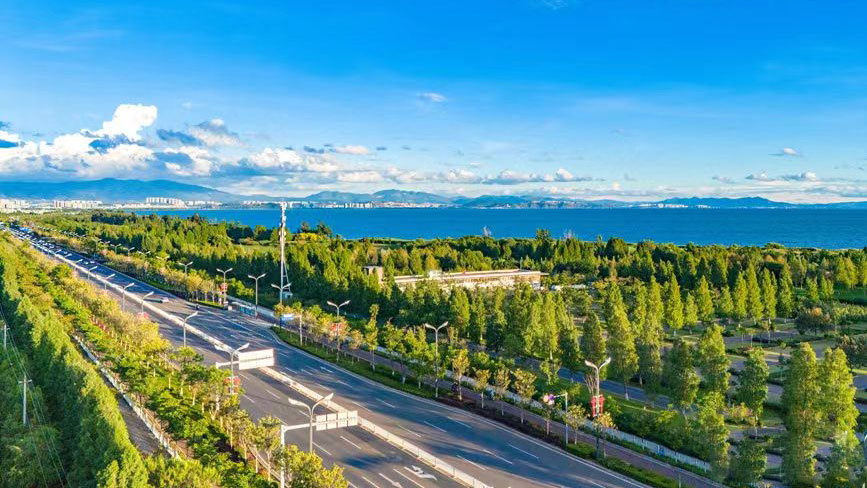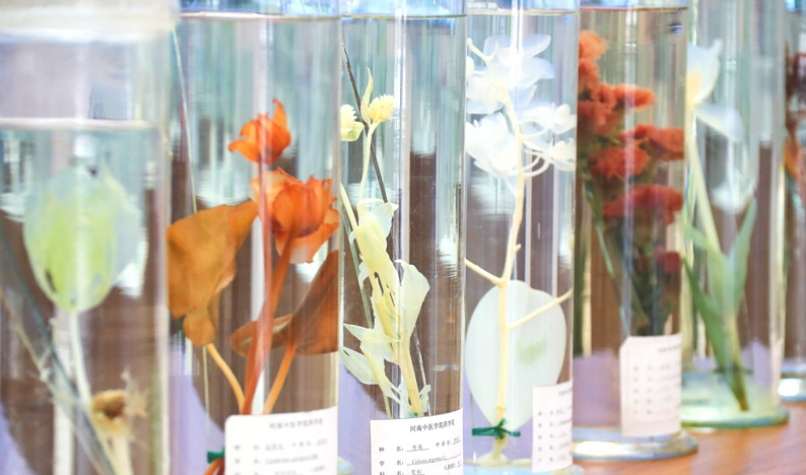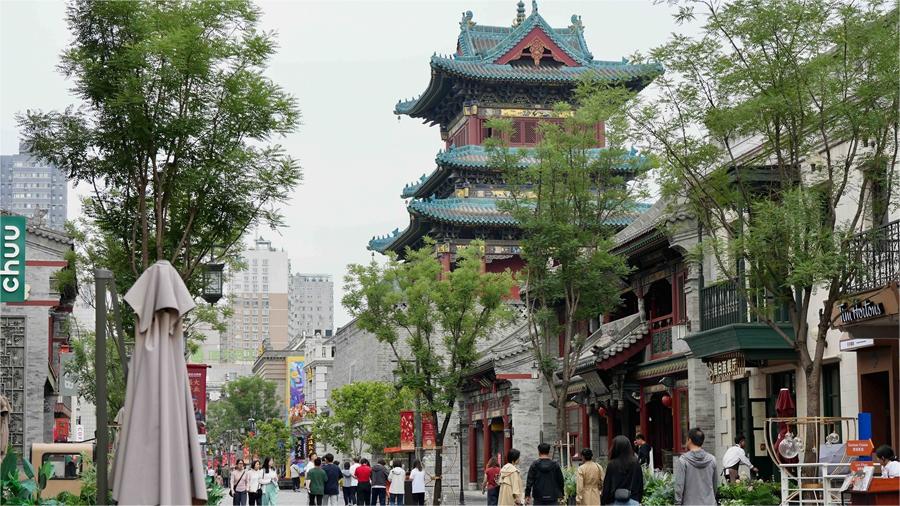Tea industry goes digital, eco-friendly in east China

An aerial drone photo taken on May 9, 2024 shows a tea farm in Xiping Town of Anxi County, Quanzhou City, China's Fujian Province. (Xinhua/Wei Peiquan)
BEIJING, June 20 (Xinhua) -- As you sip a cup of tea, particularly tea from east China's Fujian Province, two remote sensing satellites in orbit are monitoring the tea planting and maintenance.
The two satellites, both launched in 2022, can obtain the images with a resolution higher than 0.5 meters and a width of 15 km. They serve the tea-producing area in Anxi County, Fujian Province, which is famous for its tea industry.
The output value of the province's whole tea industry chain exceeded 150 billion yuan (about 21.1 billion U.S. dollars) in 2022, while its tea exports exceeded 3.5 billion yuan. Both ranked first in the country.
With the tea plantation area of 3.61 million mu (about 240,667 hectares), the province received 520,000 tonnes of raw tea output in 2022.
REMOTE SENSING DIGITALIZING TEA INDUSTRY
In order to drive the intelligent progress of tea production, the province applied remote sensing to provide accurate data analysis and services for tea planting, processing and sales.
Using remote sensing images, technicians combined the information such as meteorology, soil, agriculture and hydrology to digitally extract more than 40 indexes including area, elevation, slope, accumulated temperature, illumination, precipitation, nitrogen, phosphorus and potassium of tea gardens and build a digital database, said Wei Leichen, vice-general manager of Satellite Link Bridge, one of developers of the two satellites.
According to the spectral analysis of the image data, the technicians obtained the index data of soil moisture and organic matter content from the tea garden and tea farmers have been recommended soil testing formulas and fertilization guidelines suitable for tea plots based on the abundance of soil nutrient elements and different climatic conditions, as well as tea tree varieties and tree ages.
Satellite remote sensing is capable of monitoring a large area obtaining key information, crucial for tea farmers, such as the growth of tea gardens, disease and insect pests, as well as soil moisture and nutrients in real time.
Conversely, the collection of remote sensing data also requires tea farmers to provide relevant data such as the fertilization of tea gardens. Such interactions pushed the monitoring more efficiently and comprehensive, according to Wei.
In addition to the tea industry, the remote sensing data of the two satellites has now been applied in more fields such as agriculture, forestry, land, meteorology and environmental protection in Fujian Province.
Remote sensing technology improves the yield and quality of crops, reduces the production cost and realizes the sustainable development of agriculture, as well as playing an important role in reducing carbon emissions, said Wei.
ECO-FRIENDLY TEA INDUSTRY
"The emissions of the tea industry mainly come from tea gardens, especially excessive nitrogen fertilizer and soil acidification, product processing, distribution, and consumption," said Gao Shuilian, associate professor of the Fujian Agriculture and Forestry University.
The province has implemented precise fertilization and improved fertilization methods on its tea fields.
Liao Hong, an agronomist at Fujian Agriculture and Forestry University, began to promote eco-friendly tea farms under the Wuyi Mountains in Fujian in 2018. Her team found the perennial planting of tea trees consumed excessive soil nutrients and caused soil degradation.
To improve the quality of both soil and tea, they proposed the eco-friendly approach featuring interplanting tea with soybeans in summer and rapeseed in winter.
Phosphorus and potassium, released from the soil during the cultivation of rapeseed, return to the field after flowering and it improves the soil fertility. After the spring tea is collected, soybean is interplanted between the plots then and took effect as biological nitrogen fixing to conduct green fertilization.
Besides, Anxi County has built a carbon footprint monitoring system of Tieguanyin, the best oolong tea variety produced there, Lin Liyan, head of its local science and technology bureau, was quoted by the Science and Technology Daily as saying, adding that the green development mode with low energy consumption, low pollution and low emissions has taken shape of the county's tea industry.
Lan Siren, president of the Fujian Agriculture and Forestry University, suggested deepening the integration of big data, photoelectric information, digital economy and tea industry and beefing up its green development.
Photos
Related Stories
- Farmers harvest tea leaves in Menglian county, SW China's Yunnan
- Bangladeshi people experience Chinese tea culture with high passion
- Tea Salon in Brussels showcases Yunnan's cultural heritage
- Tea, tea culture from central China showcased in Britain
- Trending in China | Lei Cha: Traditional Chinese tea-based beverage
- African youths explore Chinese tea culture on International Tea Day
- Feature: Tea-culture exchange brews stronger China-Africa ties
- Int'l Tea Day spotlights China's ancient tea traditions
- People enjoy tea-infused cuisine in SW China's Yunnan
- Tech facilitates thriving tea industry in Dongzhi, E China's Anhui
Copyright © 2024 People's Daily Online. All Rights Reserved.









